How Do Persimmons Predict The Weather? Here’s How To Read the Seeds
Persimmons are a delicious fruit whose seeds have the ability to predict the weather, according to folklore. Take a look!
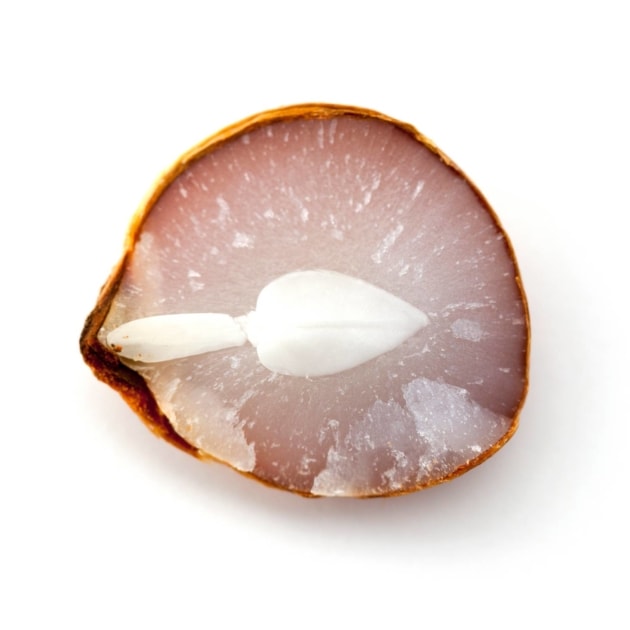
According to folklore, if you split open a locally-grown persimmon seed and the shape inside (called a cotyledon) looks like one of the shapes below, it can forecast the winter ahead:
- fork = winter will be mild;
- spoon = there will be a lot of snow;
- knife = winter will be bitingly cold and “cut like a knife.”
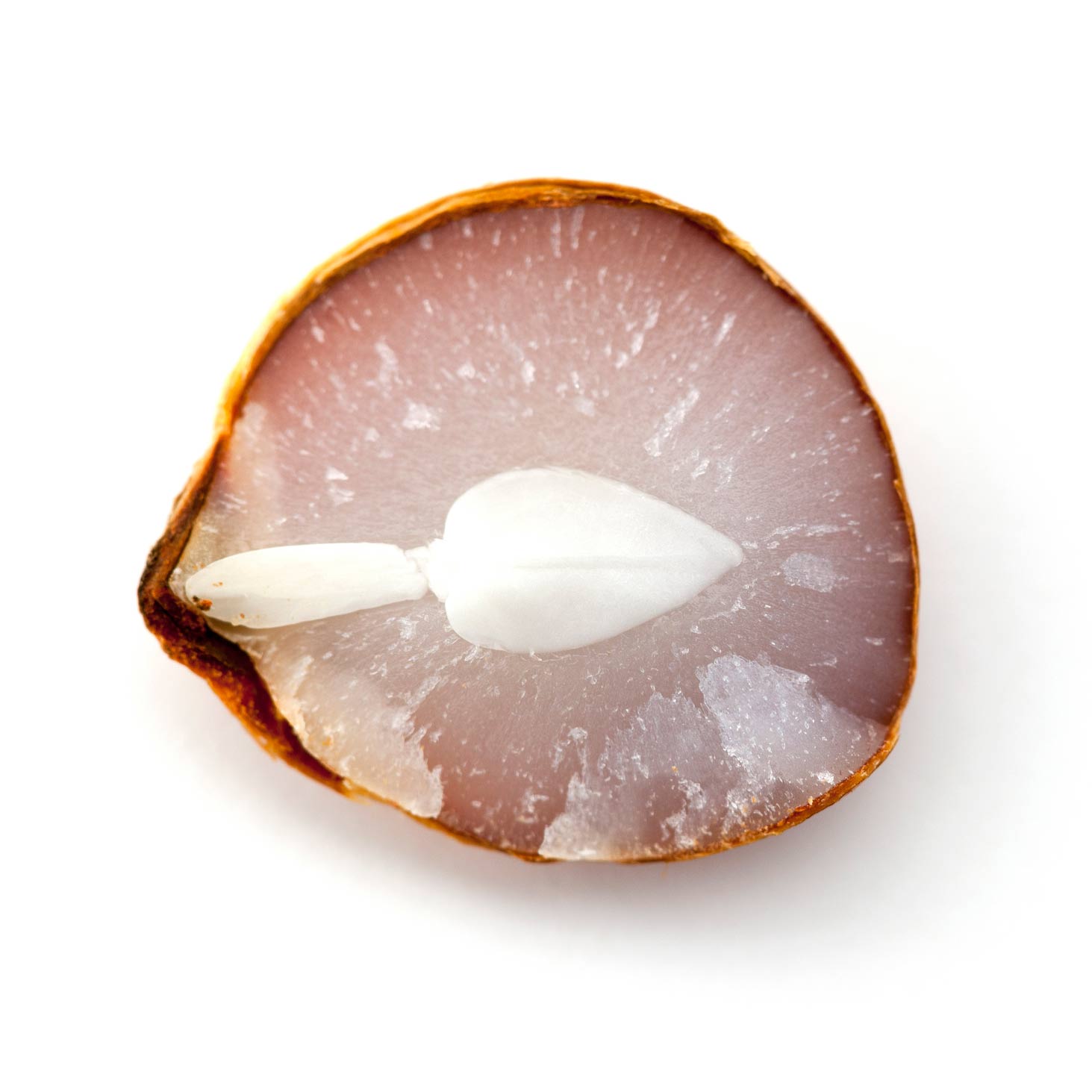
But the persimmon has to be locally grown for it to predict the weather in your area. If you buy a persimmon at the supermarket, it’s not going to predict the weather in your backyard if it was grown in another state or country.
What Is A Persimmon?
A persimmon is a soft, edible fruit (provided you bite into one that is lush and ripe, otherwise, you’re in for an unpleasant surprise) that can be eaten fresh, cooked, or dried. Persimmons make delicious jams, pies, steamed puddings, bread and muffins, stuffing, curry, and cookies. They are also delicious when sliced and served fresh in green salads with watercress and nuts.
A persimmon is actually a berry that comes from the edible fruit trees in the genus, Diospyros which has been fondly referred to as the “Divine Fruit.” Native to China, the persimmon has been cultivated for thousands of years. Japan has been cultivating persimmons for about 1300 years. Japanese and Chinese cultivars were first introduced to the U.S. from 1870 to 1920.
Today various cultivars of persimmons are grown in a dozen other countries. The American persimmon, Diospyros virginiana, also known as the Common Persimmon, is grown from Florida to Connecticut, west to Iowa and south to Texas. According to the University of California Davis, most domestic commercial production of persimmons is centered in California; in 2012, the 2,898 acres harvested produced 16,898 tons of fruit.
There are two popular types of persimmons: Hachiya is an astringent variety that is pale, heart, or acorn-shaped. Fuyu is a non-astringent variety (pictured) that is orange, tomato-shaped, and a sweet variety that can be eaten while firm, although it should have a little “give” in the flesh when pressed.
What Do Persimmons Taste Like?
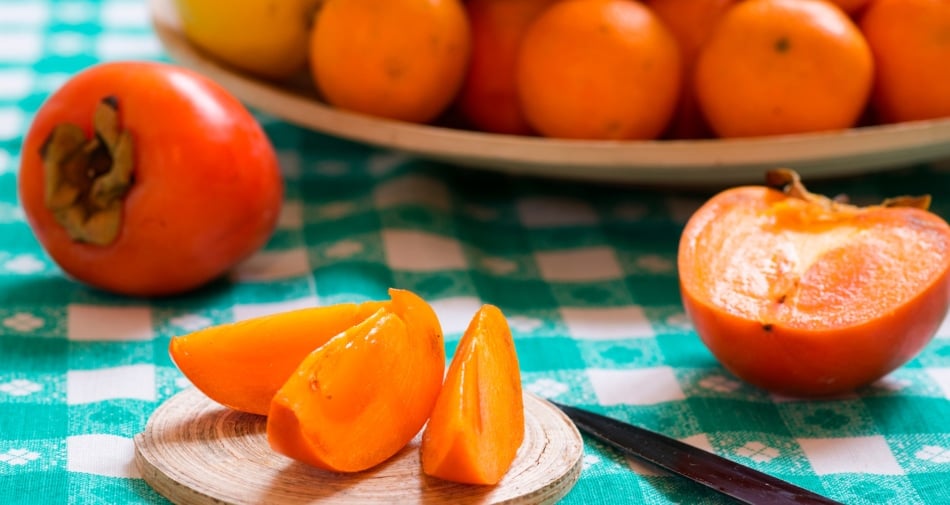
Some say the fruits taste similar to apricots, with a pudding-like texture when ripe. Enjoy it with yogurt, or sliced by itself!
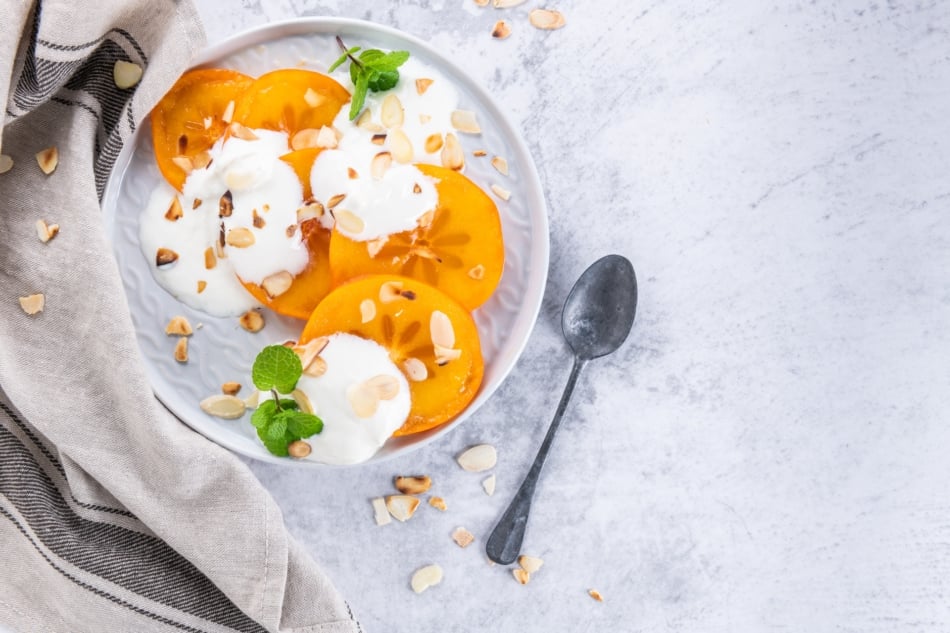
Broiled Persimmons with Ginger Mascarpone Recipe
Ingredients:
- 4 persimmons (ripe)
- Raw honey
- 1 fresh lime, quartered (reserve 1 tablespoon lime juice for cheese topping)
- 9 ounces Mascarpone cheese
- 1/8 teaspoon ground ginger
- 1 teaspoon vanilla extract
- Coconut palm sugar
Directions:
- Slice persimmons in half, crosswise.
- Place halves flesh-side up in a baking tray.
- Drizzle raw honey on top of each half.
- Place baking tray of persimmons under a broiler and broil until tops are caramelized and golden brown, for approximately 7 minutes.
- While the fruit is broiling, whisk the Mascarpone, one tablespoon freshly squeezed lime juice, ginger powder, and vanilla extract together in a mini food processor or in a bowl using an electric mixer.Remove hot tray from oven and squeeze fresh lime juice over each persimmon half.
- Place hot, broiled persimmons on a serving platter.
- Top each half with a dollop of the Ginger Mascarpone cheese.
- Sprinkle coconut palm sugar on the cheese topping and serve immediately.

Deborah Tukua
Deborah Tukua is a natural living, healthy lifestyle writer and author of 7 non-fiction books, including Pearls of Garden Wisdom: Time-Saving Tips and Techniques from a Country Home, Pearls of Country Wisdom: Hints from a Small Town on Keeping Garden and Home, and Naturally Sweet Blender Treats. Tukua has been a writer for the Farmers' Almanac since 2004.

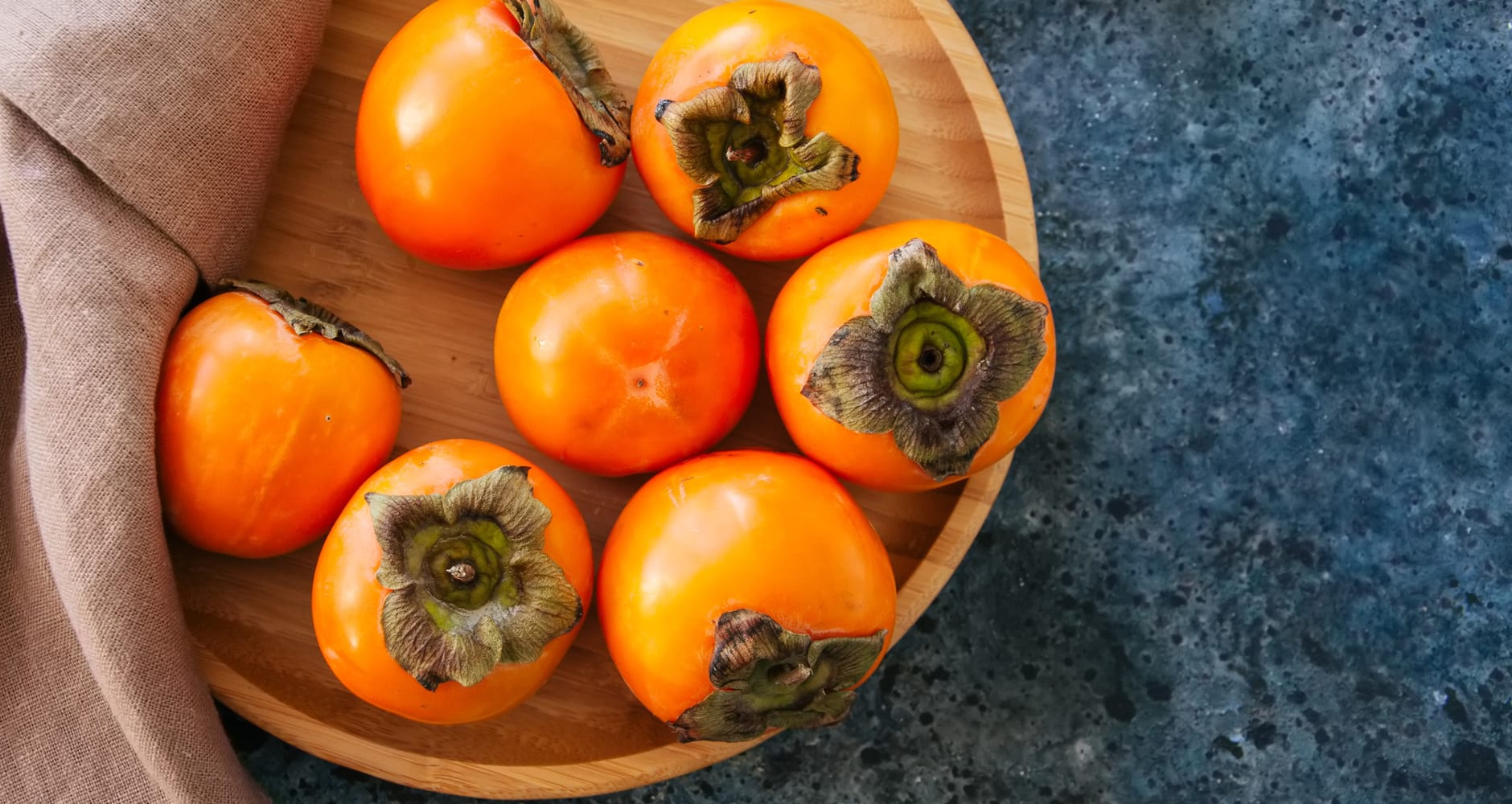
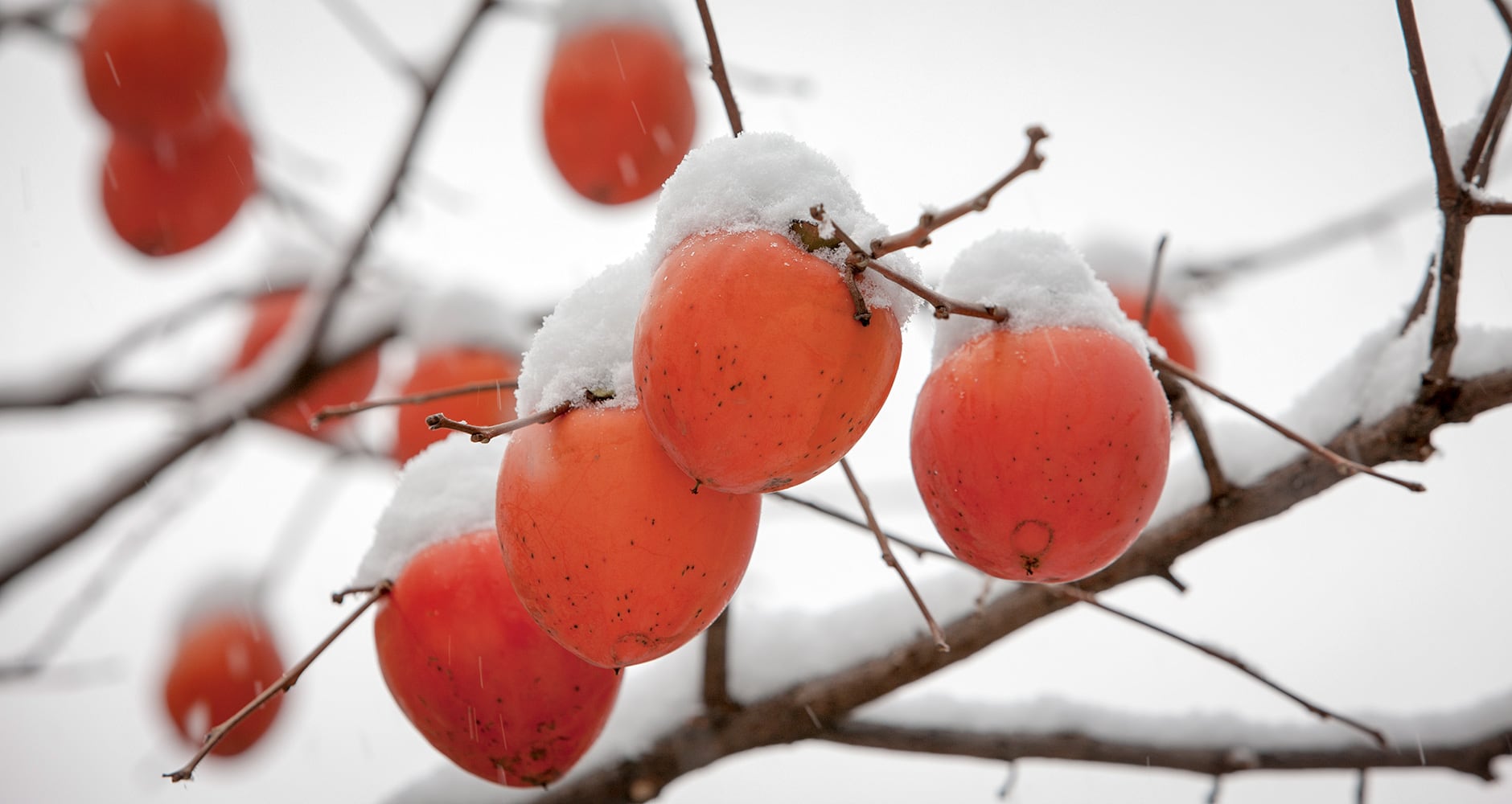




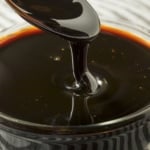

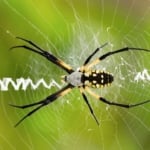
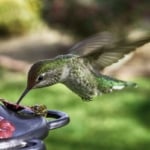
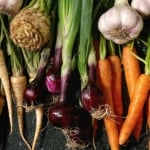

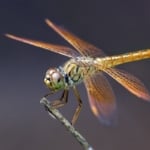
Which variety? I’m in CA and have both hachiya (the larger, almond shaped variety) and fuyu (the smaller, apple-like variety). Plus they tend to have multiple seeds. I’m also curious what variety is being used in the recipe – the hachiya is often used more for baking since it’s soft and can be easily pureed, and the fuyu are often eaten like apples or used in salads.
I have a persimmons tree in the edge of my woods. It bloomed this year, cute blooms. But it does not have any fruit on it. Would anyone not what went wrong. I don’t remember it ever having any fruit on it at all.
I Love my Almanac! Have to buy one every year. Enjoy reading it. Keep up the good work!
Thanks, Joyce! We found some info that may be helpful: “When the tree blooms for the first time and when it flowers each season varies depending upon the variety, whether it was grown from seed or grafted and local weather conditions. Oriental persimmons bloom after five years but do not bear fruit until after seven years. Grafted trees bloom within two to three years. American persimmon may take several years to blossom and still not fruit for up to 10 years. Both American and Oriental persimmons have alternate year blooming and fruiting. This means that you will get a large crop of small fruit one year and in the successive year, a small crop of larger fruit. Both varieties bloom in the late spring but the actual timing is dependent upon the weather which may also account for non-blooming persimmon trees. Occasionally, a lack of phosphorus may be responsible for non blooming. This can be remedied by adding some bone meal to the soil around your tree.”
Thank you so much. I will just have to be patient till my puts on fruit. I had planted 3 seeds in a flower pot . I planted those on the edge of my yard yesterday. Hope & pray they live & bring my children & grandchildren fruit. Thank you again & keep up the good work.
Please stay safe!
Also: Persimmon treess are dioecious. That means the have male trees, & female trees, unlike many trees that have both ale & female reproductive structures on the same tree (Like pines, many other fruit trees). What this can mean is that if you don’t have sexes of both trees available in an area small enough to encourage wind-blown pollination, you may be out of luck waiting for fruit.
Thanks, Ed Lewis!
Deer
There is a big difference in these permissions in this article and the wild permissions growing in the Southeastern US. Wild ones need frost to sweeten them. If eaten before frost is on them you will know real quick. They are so bitter feels like your mouth turns inside out.
I agree, many years ago my parents had a friend who had several large persimmon trees on his property and offered us the fruit, whereas each year when they ripened he would call my dad and we would go picking. We first picked the ripe persimmons that had fallen to the ground and weren’t damaged, and then we would climb into the trees picking what looked like ripe persimmons taking a treat or two as we went, however from time to time we would bite into one that wasn’t ripe and they do have a very bitter taste, however I recalled the slightest touch to the tongue would also cover the inside of your mouth and throat with a thick white waxy type buildup that was instantaneous. You can’t forget something like that and today about 50 years later I have a pretty good size persimmon tree that grew wild along my fence row and it’s putting out a lot of fruit, which the birds are getting them and leaving half eaten ones all over the ground faster than they can fully ripen.
never heard of this in my entire life
Many years ago I recall them being very sweet and tasty fruit, but watch out for the unripened ones they will leave memories you won’t soon forget! Just remember to slightly touch the fruit against your tongue and if it’s bitter don’t eat, but if it’s sweet eat away!
We also live in SE Oklahoma. We had gobs of persimmon trees as a kid. They were on the bank of a pond and beavers have pretty much destroyed them. I like to keep them growing, because deer will always come on tour property . Deer are crazy for persimmons. Don’t let horses start liking them. Horses can get bad colic and possibly fatal.from overindulgence . Keep your horses away from fruit to be on the safe side.
Very interesting. I did not know they originated from China!
Leslie Nelson
In Southeastern Oklahoma I had an abundance of acorns fall. They were full and healthy. However, the winter has not been as harsh as in the past, but then, February is not here yet. Persimmons were not as plentiful this year and those that did produce came very early and they were small in size.
When you stated that you were celebrating 200 years and was reading antique editions I thought what a wonderful idea and went back to my own collection to read again the wonderful knowledge you provide. Thank you so much for providing us with such wonders and adventures thru the years.
A picture of the bush or tree in bloom would be a nice add on to this page. Such a beautiful flower seen in many oriental depictions. Simple and bright…or is what I’m thinking is a Quince?
Hi Joni Roberts: Both the quince and persimmon have beautiful little blooms of dainty flowers – so pretty!
I live in Sheridan, Arkansas. We have only 1 variety that I know of and it is so sweet. It is an apricot color and you will just find them randomly growing. I consider it lucky to find one and the white tail deer here love them.
I grew up with a persimmon tree in my back yard, but it produced small (ping pong ball size)dark orange fruit. My mother made a pudding out of them. Can the large Chinese type be used in the same way?